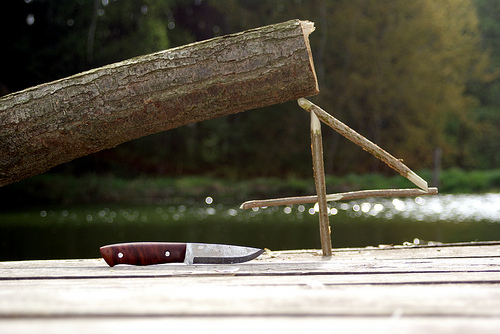There’s a lot of good information for survivalists on the Internet and on TV. However, not all of it should be believed. And, unlike getting the wrong sports score or the incorrect list of ingredients for a recipe, getting the wrong survival information can mean life or death in an emergency situation. Below are five such myths that abound on the Internet and on reality TV. Don’t believe them.
1. Food should be your first survival priority.
False. Even though you see people eating grubs, worms and other nasty treats on TV, the human body can actually survive up to six weeks without any food. Your chances of eating something toxic are greater than starving to death. If you’re lost, it’s better to spend your time locating water and shelter. Dehydration and hypothermia are much greater dangers.
2. Water from a clear stream is safe to drink.
False. Despite what you see on shows like “Survivor,” a clear stream does not mean that the water is free from bacteria and other contaminants. The safe survivalist rule is to assume all water is contaminated until you know otherwise. Counter this by making sure that you always carry a pocket sanitizer, filter, or iodine with you, even on a short hike.
3. You can learn what plants to eat and which to avoid in a book.
False. A field guide may be a good place to start, but the difference between a toxic and/or fatal mushroom or berry and one that’s edible aren’t all that obvious and can’t be illustrated completely in a book or an article. Better to learn from a survival trainer or bushmaster.
4. Having a roof over your head is most important when building a shelter.
False. The most important part of a shelter is building a bed that is elevated and insulated from the ground. The floor temperature is colder at night than the air temperature. In addition, dew makes the ground wet, a potentially life-threatening circumstance in cold weather. Build a roof AFTER you’ve built a bed.
5. All you need to do to build a fire is to rub two sticks together.
False. Although you can make a fire using friction, it takes skill and training. The average person could spend all day at it and not get a spark. Learn 21 fail-safe ways to start a fire in any survival situation.
It’s also wise to remember that survival skills are only designed to be relied on in extreme circumstances. It’s better to be alert and avoid needing to use your skills when you go out on a day hike.
About The Author
At Survival Life our mission is to provide a vast array of knowledge, tactics, and skills in the survival and preparedness fields, to any and all who wish to become more prepared for whatever may come. We will take a logical and no nonsense approach to survival without bias in hopes of dispelling the myth that anyone who prepares themselves is crazy or paranoid. Click here to visit our site and learn more.
Sources:
http://www.foxnews.com/travel/2013/09/06/13-survival-myths-that-could-kill/



















